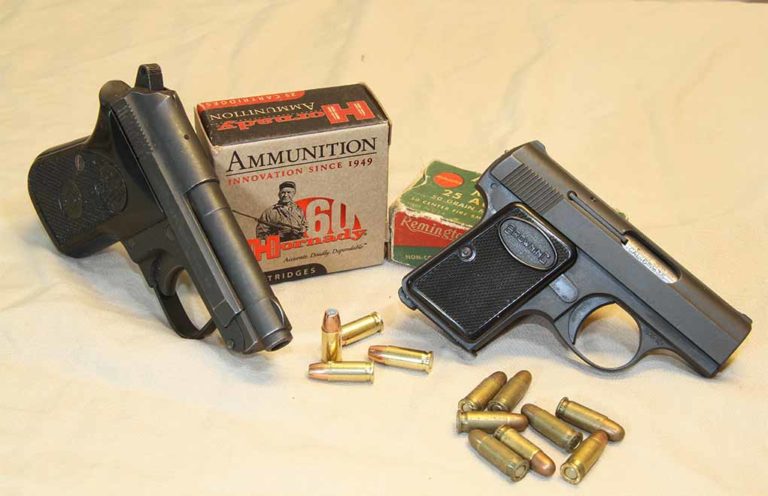
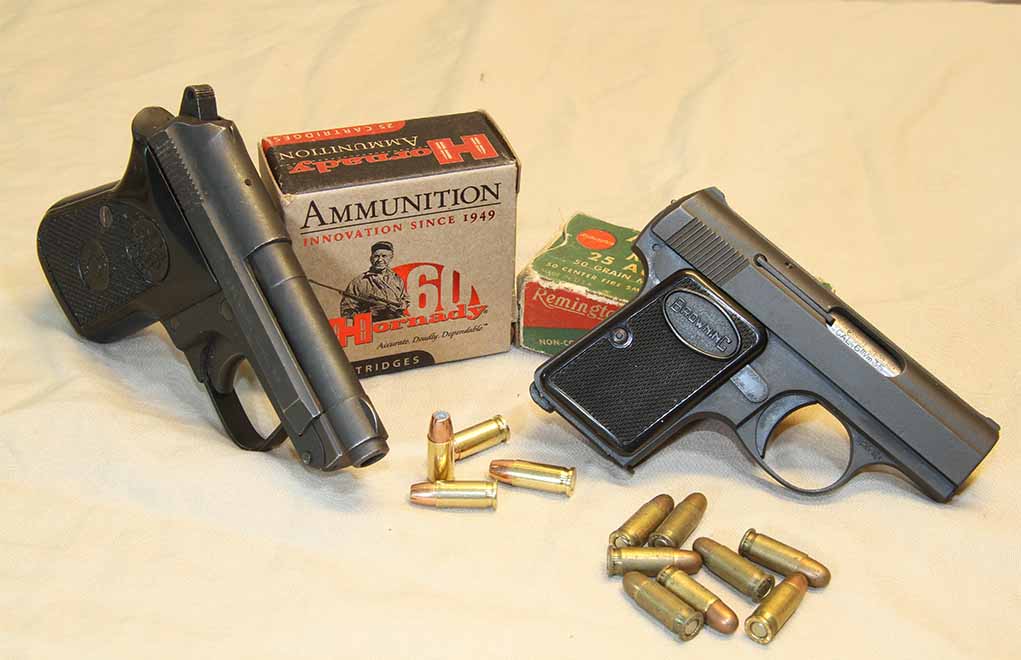
Tempting as the convenience of mouse guns and micro pistols are, do the .25 ACP, .22 LR, .22 WMR and 5.7×28 have the stuff to save your life?
How Does Each Light Caliber Stack Up:
If you’re going to choose a light caliber for self-defense, do it right
The subject of a .22LR, .22 Magnum or .25 Auto for personal defense is controversial. They’re not stoppers. Period. End of story. However, they are still lethal weapons.
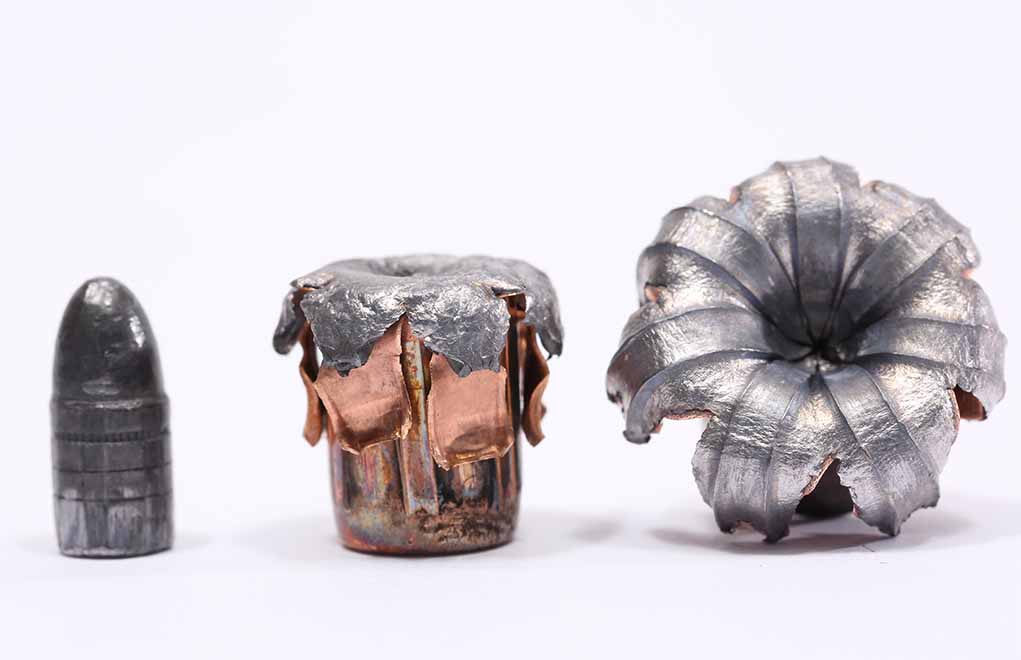
The reason they exist is twofold: compactness and low recoil, both of which make them appeal to many as potential everyday carry guns. The smallest handgun to be had is an ultra-compact .22LR, or a .25 Auto. The lowest-recoiling handgun you can shoot is a standard-sized pistol chambered in .22LR, such as one of the smaller-sized Ruger Mk I, II, III or IV. The .25 ACP/Auto is not much different from the .22LR, with the exception that the bullet, almost always a full metal jacket, can be counted on to feed more reliably than the lead-bullet .22LR. But, that can also be a matter of maintenance (a lint-choked pistol isn’t going to feed anything reliably) and handling.
.25 ACP
I will just pass right over the .25 ACP. Despite the compactness of some of the pistols that use it, it offers nothing the .22LR doesn’t, ballistically, and does so at greater cost, less availability and fewer options for pistol choices.

.22LR
The standard .22LR offers only a straight, bullet-diameter permanent wound, with a depth of 14-15 inches. There may be some expansion with hollow-point bullets, but that comes at the expense of a couple of inches of penetration. Also, some bullets may yaw and end up stopping base-first in the wound track. When traveling sideways, it does create a marginally larger permanent wound than a simple cylinder, but that’s hardly something to boast about.
The .22LR is not a big stick when it comes to defense, but it is better than a knife or a club — especially for someone who can’t handle heavier recoil.
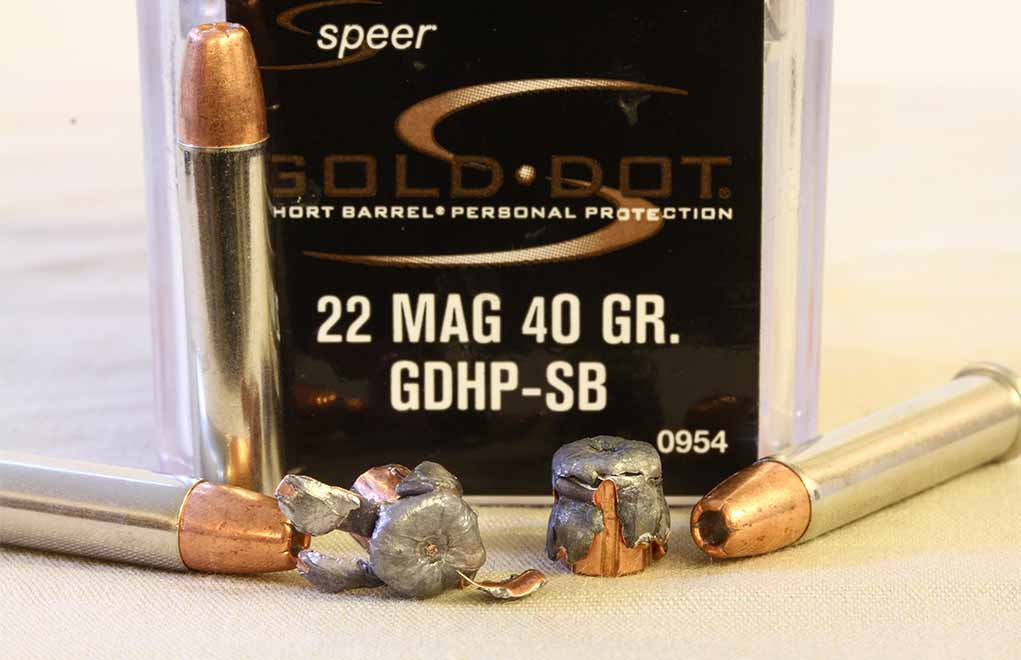
The trick to its use in defense is to realize two points. First, you will have to depend on more than one shot. In fact, the standard response when shooting in defense with a .22LR should be to empty the magazine and immediately reload. Second, placement matters. The hits have to be high center of mass or else the effort is wasted.
This combination of needs does not make the .22LR a high-percentage option, even in the handgun realm. But, for those with no other choice, there is no other choice.

Get More Concealed Carry Information:
- 11 Top Picks For Concealed Carry Handguns
- 7 Standout Concealed Carry Revolvers For Personal Defense
- 6 Concealed Carry Insurance Options To Protect Your Six
- Carry Right With 8 Top Concealed Carry Holsters
- 6 Top Micro 9mm Handguns For Everyday Carry
- 4 Must-Have Concealed Carry Upgrades
- Gallery: 9 Greatest 9mm Single Stacks
- Best Caliber for Self Defense: 9mm, .40 S&W or .45 ACP?
- Concealed Carry: Is The .380 ACP Enough For Self-Defense?
- Concealed Carry: What About +P Ammo?
.22 Magnum
Stepping up, you have the .22 Magnum, which is a longer case than the .22LR and designed to contain the bullet inside the case. The jacketed bullet offers the promise of expansion, but that’s not always the realization. You see, a .22 Magnum out of a rifle generates plenty of velocity. Out of a handgun, it’s often no faster (or not enough faster to matter) than a .22LR cartridge.
The expansion of any of these bullets is not a reliable outcome. Even if they do expand, the degree is not great. An expanding .22LR, all 40 grains of it, could bump up to .27-inch in diameter.
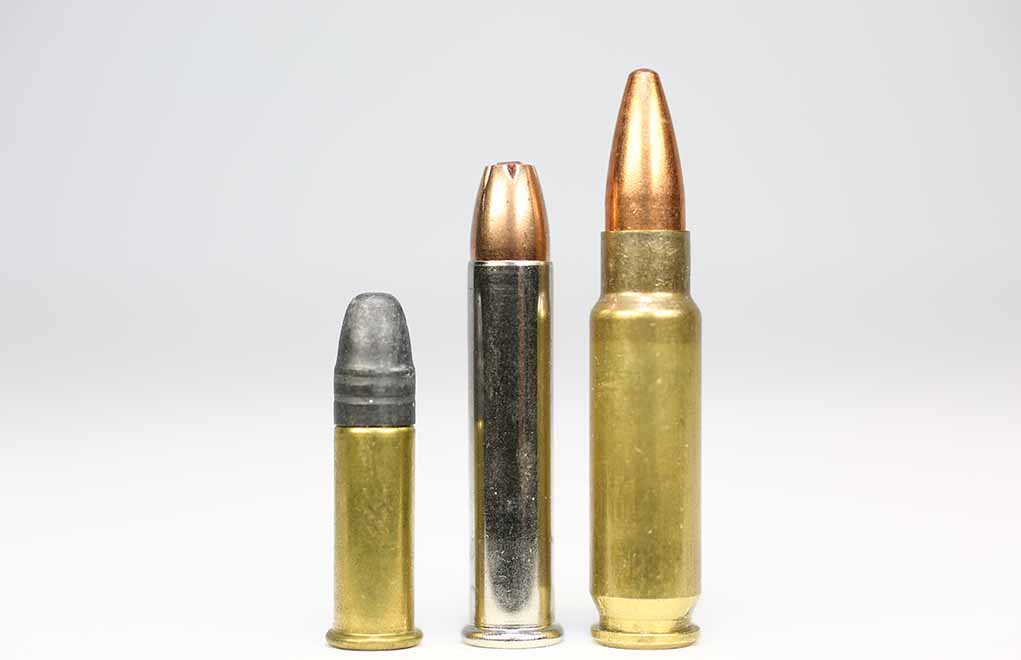
Hornady has lead the way here, offering a defensive-use .22 Magnum loading, with a bullet designed to expand at velocities the .22 Magnum can deliver. Called their Critical Defense, it gives 9-10 inches of penetration in ballistic gelatin out of a handgun.
Speer also makes their Gold Dot line of ammunition in the .22 Magnum. If you want as much performance as you can get, in a pistol that isn’t going to kick much, then the .22 Magnum can be a good choice.
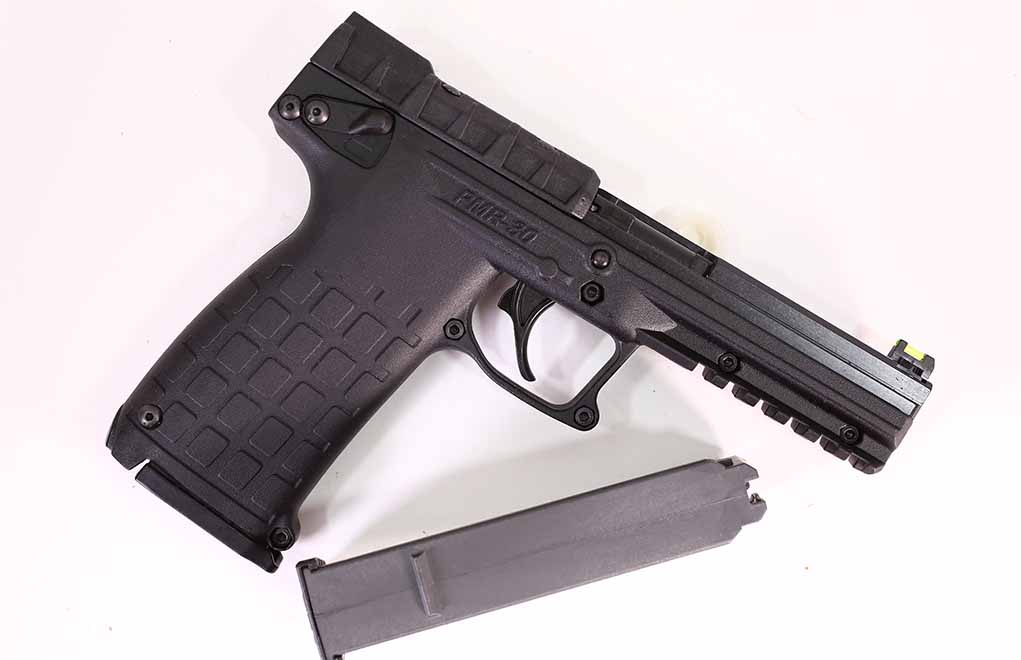
Combined with a handgun such as the Kel-Tec PMR-30, someone who can’t handle a larger caliber can reasonably expect a good outcome. Part of that is the improved performance of the .22 Magnum over the .22LR, and the other is capacity. A standard .22LR pistol has a 10-round magazine. The PMR-30 magazine holds 30 rounds.
Nine to 10 inches isn’t FBI-passing performance, but it also doesn’t offer anything like the recoil of an FBI-compliant load. This is part of the compromise.
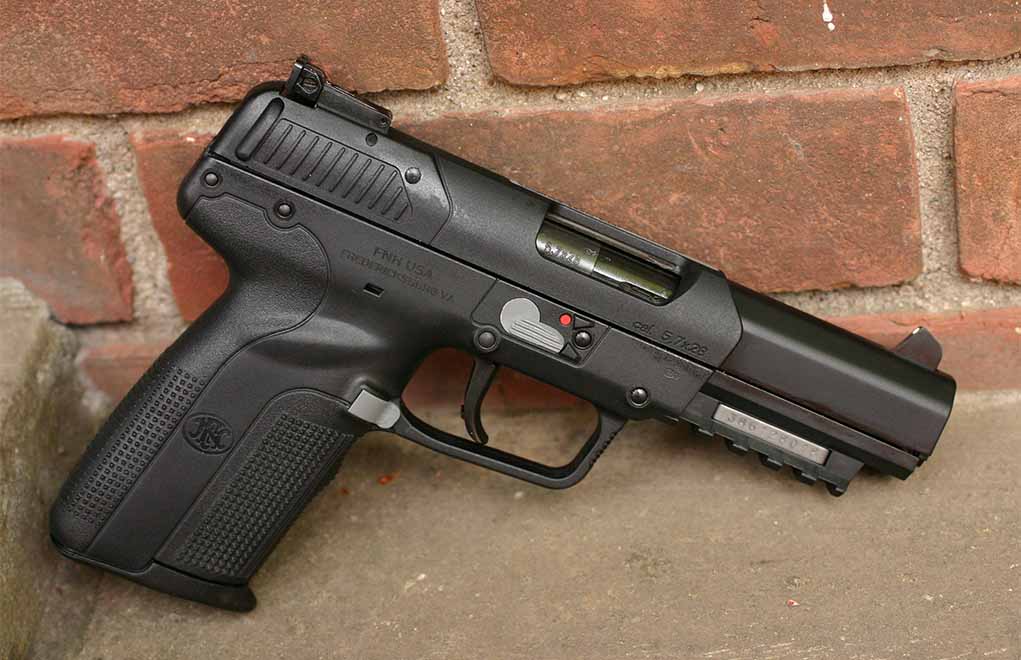
5.7X28 FN
The outlier here is the FN 5.7×28 cartridge. This centerfire cartridge uses a jacketed bullet, longer than a .22LR or .22 Magnum. Out of the firearms for which it was intended it works reasonably well. That is, out of an SMG-sized firearm like the P90, with a 10.4-inch barrel, it can generate enough velocity to work. The PS90, with its 16.1-inch barrel, really delivers the goods, but that isn’t a handgun. Put into a handgun, it comes in a bit ahead of the .22 Magnum in velocity.
There’s not a lot of data for the 5.7×28. It has been adopted by some law enforcement agencies, and it has been used in shootings by them. Getting information out of those sources is difficult. The only one we have that offers a reasonable data set is the shooting at Fort Hood. There, Major Nidal Hasan fatally shot 13 people and wounded 32 more. He used an FN FiveseveN pistol and two ammo types: the FN SS192 and SS197SR. The SS192 is (or was, FN stopped making it in 2004) a jacketed hollow-point with an aluminum core. That’s not much expansion, and not armor-piercing. The SS197SR is loaded with the Hornady V-Max bullet, using a blue polymer tip to indicate a slightly higher velocity than the SS196SR.
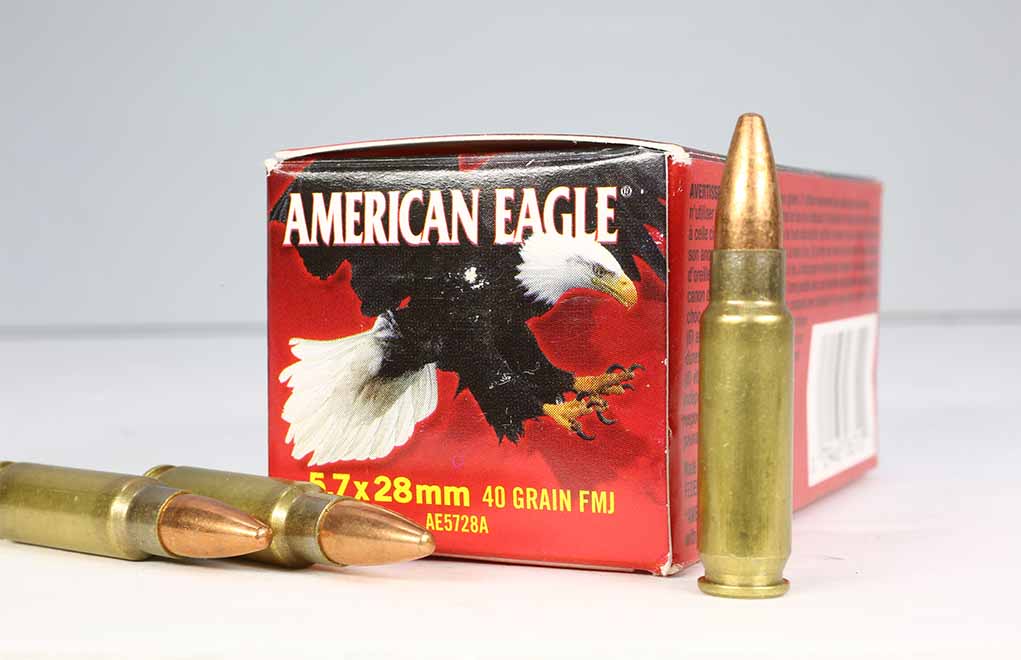
The ability of the rounds to stop fights was out of proportion from what one would expect with such a small cartridge. Three of the victims valiantly charged the shooter, attempting to stop him. They were shot for their efforts, were stopped and subsequently died. They charged from close range (the incident happened indoors, so there were not long distances to cover) and yet failed to close the distance due to the gunshot received.
Those wounded with hits to the extremities were unable, in many instances, to flee or fight, due to broken bones. When a “mere” .22 handgun cartridge can break a femur, there’s something going on that must be explained. That shot was received by one of the first responders, an in-base civilian security person. She took a hit to her wrist, which made that arm unable to function, and a hit to the upper leg that broke her femur.
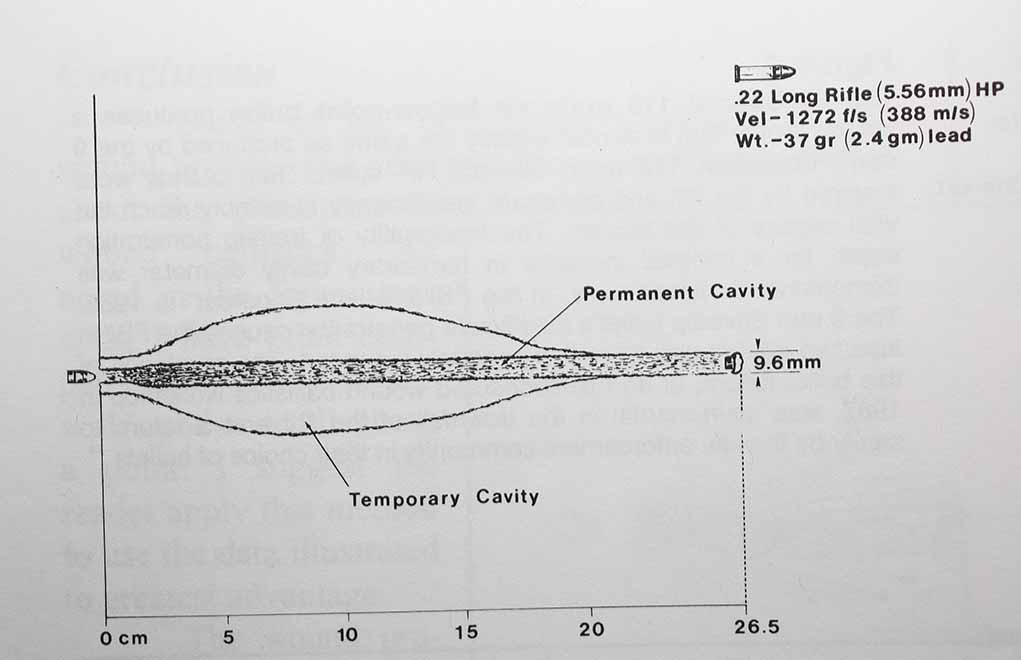
The drawback to the FiveseveN approach to low-recoil defense is cost. A FiveseveN lists for around $1,180, compared to the Kel-Tec PMR-30 at $455. The FN pistol holds 20 rounds (optional extensions make it a 30-round magazine) compared to the Kel-Tec at 30 rounds standard. An FN magazine is $35, with the extension costing another $18-20, while the Kel-Tec is $31.
The 5.7×28 ammunition costs (at the moment) $28 per box of 50 rounds, while .22 Magnum can be had for as little as $10 per box of 50 practice FMJs, up to $15 for a box of Hornady Critical Defense.

The last hurdle for the 5.7×28 is size. The grip is a bit larger than that of the Kel-Tec, and even if the recoil is mild, if you (or the person you are coaching in this situation) can’t get a hand or hands around it, it isn’t a good choice.
Recommendations
If you already have a .22LR pistol and need it for defense, then use the most accurate, readily available .22LR ammunition to be found. Practice getting as many hits out of a full magazine, on a playing-card-sized target at 7 yards, as quickly as you can. Volume and accuracy need to be your focus here.
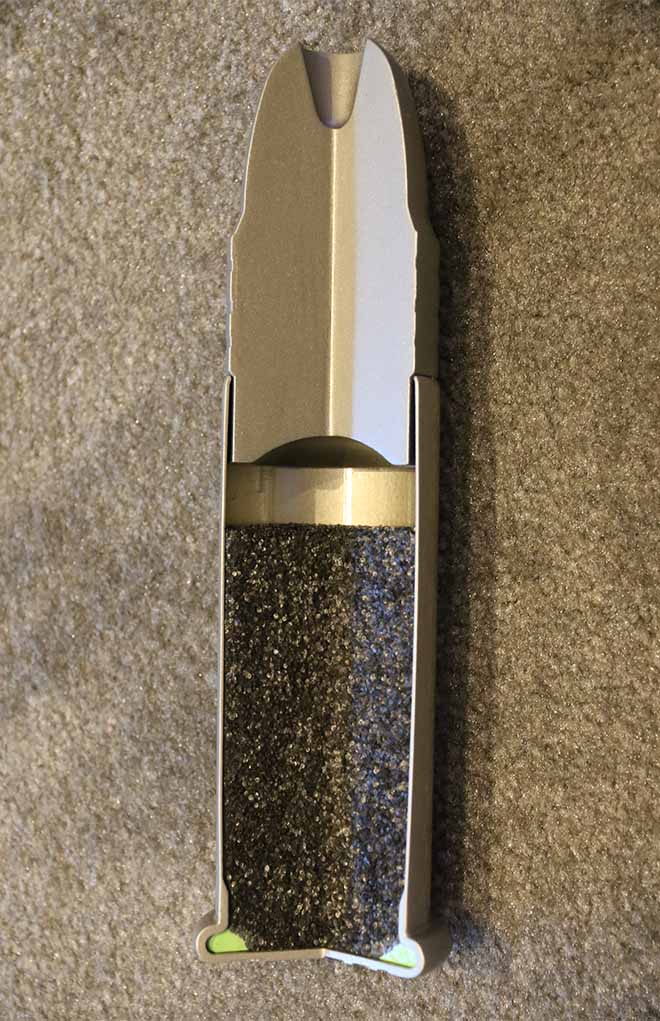
A better choice would be either Hornady Critical Defense or Speer Gold Dot in .22 Magnum in the Kel-Tec. The PMR-30 isn’t going to cost much, if anything, more than a good .22LR pistol. Use whichever of these two loads shoots reliably and accurately out of your Kel-Tec. As with the .22LR, practice hitting a playing card at 7 yards, as quickly as possible, and train yourself to keep shooting on the target until it (he, she, they) goes down.
If you have the hands and the budget, but not the recoil resistance, for something bigger in caliber, then go for the FN FiveseveN in 5.7×28, with the 40-grain FMJ. The V-Max is accurate, but it’s designed as a varmint-level bullet. I’d be much more confident with an FMJ in this situation than with a readily expanding bullet of only 40 grains.
While the effect is likely to be better than the .22LR or the .22 Magnum, the process should be the same: playing card accuracy, 7 yards, continuous fire until the bad guy goes down.
Caveats
There will be those who want to throw me under the bus for recommending the various .22s for defense. I have attempted to be clear: A rimfire is better than anything not a firearm; and for those who cannot handle more recoil, this is perhaps the only choice. I would rather someone who needs a firearm for defense has a weak one than none at all, as long as they realize the limitations of the tool they are using.
There are no .25s I can recommend. For the cost, you can easily acquire .22LR or .22 Magnum ammo that will perform better. And since you have to depend on volume and speed of fire, the ultra-compact .25s are poor choices, as clever as some of the designs might be.
Most Popular .22 Ammo Articles
- Best .22LR Hangun Ammo – Top Options for Accuracy and Reliability
- Which Round Reigns Supreme? .22LR vs .22 Magnum
- Exploring Early Rimfire Rifles and Their Contributions to Firearms

Next Step: Get your FREE Printable Target Pack
Enhance your shooting precision with our 62 MOA Targets, perfect for rifles and handguns. Crafted in collaboration with Storm Tactical for accuracy and versatility.
Subscribe to the Gun Digest email newsletter and get your downloadable target pack sent straight to your inbox. Stay updated with the latest firearms info in the industry.

![Best Concealed Carry Guns In 2025 [Field Tested] Wilson Combat EDC X9S 1](https://gundigest.com/wp-content/uploads/Wilson-Combat-EDC-X9S-1-324x160.jpg)


![Best 9mm Carbine: Affordable PCCs [Tested] Ruger Carbine Shooting](https://gundigest.com/wp-content/uploads/Ruger-Carbine-Shooting-100x70.jpg)
![Best AR-15: Top Options Available Today [Field Tested] Harrington and Richardson PSA XM177E2 feature](https://gundigest.com/wp-content/uploads/Harrington-and-Richardson-PSA-XM177E2-feature-100x70.jpg)

I really like the 5.7. It’s fun to fire and I will purchasing the new keltec when it realeases. It’s a pricier round but I believe the price will come down as more people adopt it. I took my psa rock 5.7 to my leftist gun club and they were all surprised with how it handled. As a vet who’s shot most NATO rounds, I do thing fn’s 5.7 round is a real winner, but I’d expect nothing less of the company that made my M249 SAW.
It was very useful study on this subject. I’m not a gun owner but it seems it’s time to get one . It’s really time to get one .
So far KelTec is my choice, glad to find it here ! But 22lr or 22Mag – still the question.
I bought the ruger 5.7 carbine with the 16.25 inch barrel. Gonna throw a scope on it and have some fun. I have no doubt it would be an effective home defense weapon. I also have the pistol. It’s a fun round to shoot.
I have used a .25 ACP and prefer it for a “deep concealment” pistol. I can hide my Bauer in my pocket and put 6+1 rounds in either someone’s larynx (Adam’s apple), eyes, or at the base of the throat.
A hot 50-grain FMJ from Buffalo Bore leaves my Bauer’s barrel at 810 fps, generating 72 fpe. This is enough tho make someone rethink their evil intent in shor order.
I would NOT have to explain in front of a jury of liberals why I shot a bad guy 10 times to put him out of action. That’s 10 bullets that could have went anywhere. Better 1 or 2 good hits with a larger caliber.
For the price of a 5.7×28 setup, you can get a better 9mm with low recoil ammunition if you need it. There are grips available to fit just about any hand.
The “security person” seriously wounded by Nadal Hassan at the SRP site on Ft Hood was a certified Department of The Army Police Officer. She was saved from being shot again, and probably killed, when her fellow DA Police Officer shot Hassan multiple times and paralyzed him.
No mention made of the Winchester Silvertip and Federal Punch .22LR rounds, specifically designed as self defense rounds to be used in handguns. The Punch, especially, is supposed to meed FBI penetration standards.
I have and use, one of the Kel Tec PMR30 pistols. Also, have arthritis in both hands. Kel Tec’s recoil is acceptable and my pistol is accurate. I have found that CCI Maxi Mag .22 mag. hollow point’functions well in my Kel Tec, actually better than all other brands that are available, so that’s what I use. What think you about that combination, In my Kel Tec, the hp’s function flawlessly every time I shoot and that’s the only load I use, because of that.
Interesting read, including the comments. I like the one comment about using a single six for home defense – not usually mentioned in that context. The article seemed focused on semi-auto’s and ignored revolvers. The bottom line being what works best for a given individual is what works best, and ammo selection is important. My guess is the only ones who poo-poo getting shot with a 22 are those that have never been shot with a 22. 22’s have killed a lot of things over the years. Granted it may take more than one hit, but the first hit is bound to get the target’s attention. And from what I’ve read there are very few rounds of any caliber that can reasonably provide a one-shot stop without risking over-penetration.
Having a 22 is better that a pointy stick and my wife can tear up a head and groin area of a target. to the point i wouldn’t want to get shot by it
By glossing over .25 ACP you missed several BIG points in favor of it. In fact, .25 ACP was created to address the deficiencies of .22 and has advantages in primer reliability and bullet design. Reliability should be at the top of the list for a self defense weapon. The round nose, jacketed bullet was designed to feed more reliably than exposed lead. The shape and construction also lend the .25 better penetration – and the heavier bullet weights more typical of .25 add to this.
Someone else can wax poetic about the rim design as to how it affects magazine feeding and extraction – obviously John Moses Browning thought it worth moving away from the rimmed design of the .22 – but there are automatics in .22 that are make it work.
Totally agree. This authors review is sheer crap. If he doesn’t want to review the 25 acp then don’t list it at all. Lazy article.
Every .22 article I read have the same elementary errors. There is a huge difference between pistol and rifle ammo. Most .22 lr and .22wmr ammo is designed for a rifle; to burn over 16 inches. There is pistol ammo in these calibers but it is never mentioned as such. Speers and Hornady (both mentioned in article) and Winchester (not mentioned) make .22wmr that was specifically designed for handguns. There is also .22lr designed for handguns. Critical Defense, in all its calibers, is designed for short barrel handguns as compared to Critical Duty, which was designed for service size hand guns. 5.7 x 28 is center fire, why compare it to rimfire? Why not compare it to 22TCM? I am disappointed that technical facts seem to be overlooked and comparisons are apples to oranges.
I have pistols .22 caliber pistols
1. .22 WRM (RUGER Single Six)
2. 5.7 x 28 (RUGER 57)
Both cartridges are fully capable of good home defense, especially the 5.7 x 28 in my PS90 and RUGER 57
The Single Six has a 6″ barrel and is too cumbersome for concealed carry but delivers a punch with that barrel length.
The large frame RUGER 57 is also too big for concealed carry EXCEPT when I’m hiking in Nevada’s mountains. Then I feel it’s a better pistol than my regular carry gun, a RUGER LC9s because that 5.7 x 28 cartridge can reach out further than virtually any other handgun cartridge.
->And BTW, I’m not a RUGER fanboy, it’s just that RUGER happened to make exactly what i wanted at the time.
I’d like to read your opinion of the 22 TCM for a self defense pistol?